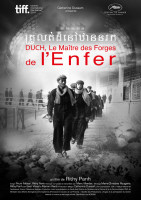Duch, le maître des forges de l'enfer Filming Locations

Where was Duch, le maître des forges de l'enfer filmed? Duch, le maître des forges de l'enfer was filmed in 3 locations across Cambodia in the following places:
Duch, le maître des forges de l'enfer Filming Locations
Phnom Penh, Cambodia’s busy capital, sits at the junction of the Mekong and Tonlé Sap rivers. It was a hub for both the Khmer Empire and French colonialists. On its walkable riverfront, lined with parks, restaurants and bars, are the ornate Royal Palace, Silver Pagoda and the National Museum, displaying artifacts from around the country. At the city’s heart is the massive, art deco Central Market.
Cambodia is a Southeast Asian nation whose landscape spans low-lying plains, the Mekong Delta, mountains and Gulf of Thailand coastline. Phnom Penh, its capital, is home to the art deco Central Market, glittering Royal Palace and the National Museum's historical and archaeological exhibits. In the country's northwest are the ruins of Angkor Wat, a massive stone temple complex built during the Khmer Empire.
Duch, le maître des forges de l'enfer (2011)
Between 1975 and 1979, the Khmer Rouge regime caused the death of some 1.8 million people, representing one-quarter of the population of Cambodia. Kaing Guek Eav, better known as Duch, was in charge at M13, a Khmer Rouge-controlled prison, for four years before being appointed by the Angkar ("the Organisation", a faceless and omnipresent entity which reigned unopposed over the destiny of an entire people) to the S21 centre in Phnom Penh. As party secretary, he commanded from 1975 to 1979 the Khmer Rouge killing machine in which at least 12,280 people perished, according to the remaining archives. But how many others disappeared, "crushed and reduced to dust", with no trace of them ever being found? In 2009, Duch became the first leader of the Khmer Rouge organisation to be brought before an international criminal justice court. Rithy Panh records his unadorned words, without any trimmings, in the isolation of a face-to-face encounter. At the same time, he sets it into perspective with archive pictures and eye-witness accounts of survivors. As the narrative unfolds, the infernal machine of a system of destruction of humanity implacably emerges, through a manic description of the minutiae of its mechanisms.
